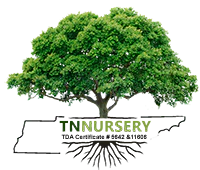Filters
The Many Advantages of Planting Birding Plants
Populating your lawn and garden with birding plants has many advantages. Birds enjoy many of the same landscaping concepts that humans find attractive and useful. Plantings of a variety of heights create a well-balanced visual appearance and an ideal environment for most native bird species. Fruiting flowers provide food and shelter for people and birds, whereas perennials are attractive visually and give birds a source of reliable seasonal food.
They Help Save Wildlife
Trees such as the American Basswood-Tilia americana, the Scarlet Maple-Acer rubrum, and the Flowering Dogwood-Cornus Florida all provide habitat and food for birds. These relatively fast-growing trees also provide focal points and shade for your yard. Many bird-friendly trees are adapted to a wide variety of soil types, and most deciduous trees are hardy up to zone 8. Some hardwoods are hardy in even colder climates, such as many of the maples and oaks. Consider planting
They Are Stunning In Landscapes
American Sweetgum-Liquidambar stryaciflua or Black Cherry-Prunus serotine, if space permits, is a very tall tree. Other trees that attract birds are evergreens, such as the White Pine-Pinus strobus and American Holly-Illex opaca. Evergreens not only keep some bright spots of color in your winter landscape but also provide crucial shelter for birds during the winter months. Chickadees, cardinals, and nuthatches rely on evergreens to protect them from the elements and provide some food during the cold season.
Trees are not the only additions you can make to your garden. Shrubs and perennials are often employed by birds as well. The best birding gardens employ trees, shrubs, and perennials to create the environment most attractive to bird species. Think about including Sumacs, Serviceberry-Amelanchier, and Chokeberry-Aronia species to provide shelter and small fruit for birds and other wildlife.
These Are Garden Plants Nursery's Favorites
Perennials such as Bee Balm-Monarda and Orange Coneflower-Rudbeckia fulgida are well known for providing food for hummingbirds. Other birds enjoy Goldenrod-Solidago virguarea and Coreopsis for the seeds they provide. Humans enjoy the bright flower colors and the reliability of these perennials, which grow well in rich garden soils and are hardy in zones 3-10.
When you design your landscape with birds in mind, the resulting design is pleasing to the eye, easy to maintain, and provides habitat all year long. The same plantings that birds find attractive are the plantings that give us shade cover, attractive fruits, and nuts and are well adapted to our climate and growing conditions.
















































